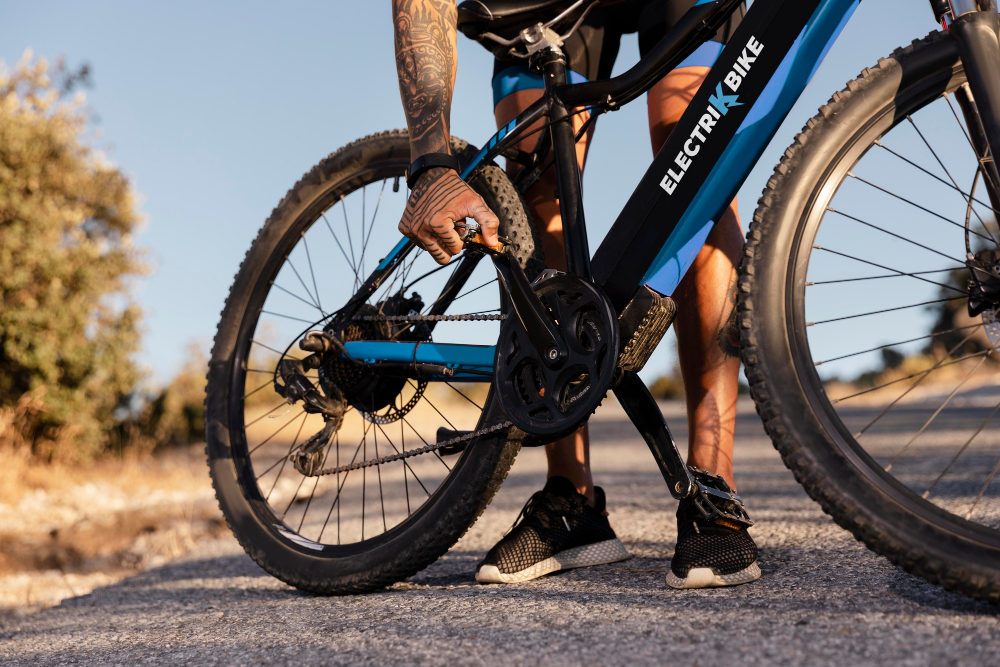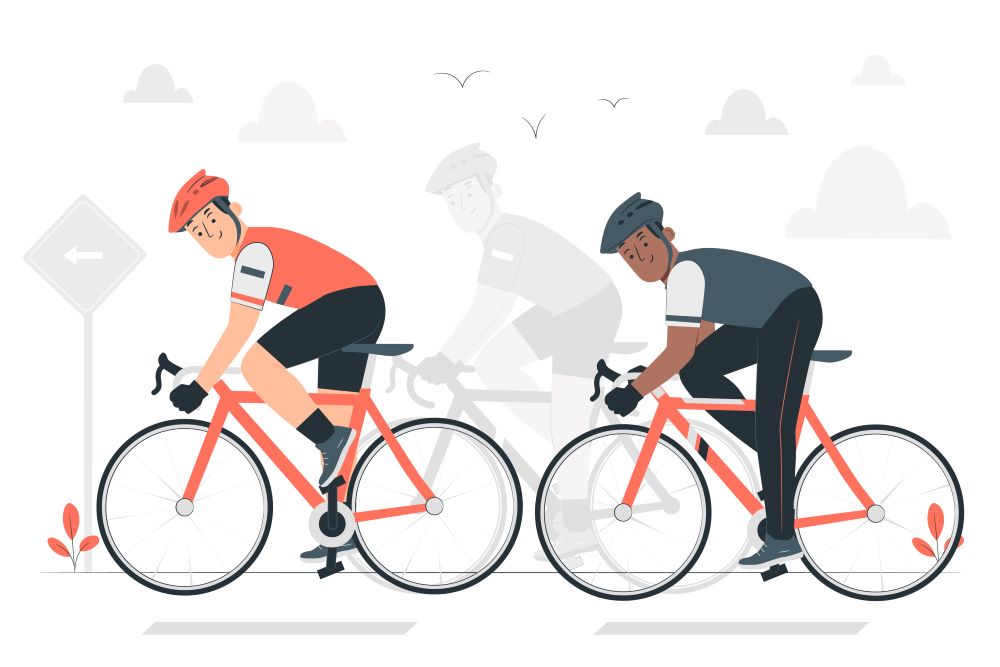How fast is an e-bike?

How fast is an e-bike?
Electric bikes, or e-bikes, are becoming increasingly popular. Many people are curious about how fast they can go and what the experience is like. Let’s take a look at some of the factors that affect how fast an e-bike can travel. The speed of an e-bike is mainly determined by the power of the battery and the power of the motor. The battery powers the electric motor, which helps you to pedal. The more powerful the battery and the motor, the faster the e-bike will go. There are also other factors that can affect the speed of an e-bike. The weight of the person riding the bike, the type of terrain, and the wind can all impact how fast the e-bike moves. Generally, e-bikes can travel up to 20 mph. This varies depending on the factors mentioned above. E-bikes are a great way to get around town quickly and easily. They are perfect for commuting and for running errands.

1. How fast is an e-bike?
Electric bikes, or e-bikes, are becoming increasingly popular as an alternative to traditional bicycles. E-bikes are powered by a battery and motor, and can reach speeds of up to 25 mph.
So, how fast is an e-bike?
The answer depends on a few factors, including the type of e-bike, the terrain, and the rider’s pedaling effort.
The two main types of e-bikes are pedal-assist and throttle-on-demand. Pedal-assist e-bikes provide power when the rider is pedaling, and throttle-on-demand e-bikes provide power when the rider presses a button or twist the throttle.
On flat terrain, a pedal-assist e-bike will typically reach speeds of 20 mph, while a throttle-on-demand e-bike will reach speeds of 15 mph. On hilly terrain, a pedal-assist e-bike will reach speeds of 15 mph, while a throttle-on-demand e-bike will reach speeds of 10 mph.
The rider’s pedaling effort also plays a role in how fast an e-bike can go. If the rider is pedaling hard, an e-bike can reach speeds of 25 mph. However, if the rider is not pedaling, an e-bike will only reach speeds of 20 mph.
In conclusion, the speed of an e-bike depends on the type of e-bike, the terrain, and the rider’s pedaling effort. On flat terrain, a pedal-assist e-bike will typically reach speeds of 20 mph, while a throttle-on-demand e-bike will reach speeds of 15 mph. On hilly terrain, a pedal-assist e-bike will reach speeds of 15 mph, while a throttle-on-demand e-bike will reach speeds of 10 mph. The rider’s pedaling effort also plays a role in how fast an e-bike can go. If the rider is pedaling hard, an e-bike can reach speeds of 25 mph. However, if the rider is not pedaling,
2. What are the benefits of an e bike?
Electric bikes, or e-bikes, are becoming increasingly popular as an alternative to traditional bicycles. E-bikes are powered by a battery and motor, and they can provide a boost of power to help you pedaling up hills or long distances.
There are many benefits of riding an e-bike, including:
1. E-bikes can make cycling easier and more enjoyable.
If you find cycling to be difficult or strenuous, an e-bike can make it much easier. The motor assists with pedaling, so you don’t have to work as hard. This can make cycling more enjoyable and allow you to ride for longer distances.
2. E-bikes can help you ride faster and further.
The motor on an e-bike can give you a boost of speed and power, making it easier to ride up hills or to maintain a high speed. This can also allow you to ride for longer distances without getting tired.
3. E-bikes can help you save money.
Electric bikes can help you save money in a few different ways. First, they can help you save on transportation costs. If you use your e-bike for commuting, you can save on gas or public transit costs. Second, e-bikes require less maintenance than traditional bicycles, so you can save on repair and replacement costs.
4. E-bikes are environmentally friendly.
E-bikes are powered by electricity, so they don’t produce emissions like gasoline-powered vehicles. This can help reduce your carbon footprint and make a positive impact on the environment.
5. E-bikes can provide a workout.
Even though the motor assists with pedaling, you’re still getting a workout when you ride an e-bike. You’ll be able to burn calories and build muscle, and you can adjust the level of assist to make the workout more or less challenging.
If you’re considering an e-bike, these benefits can help you make a decision. E-bikes offer a unique and enjoyable cycling experience that comes with a variety of benefits.
3. How does an e bike work?
How fast is an electric bike?
This is a difficult question to answer as electric bikes can vary greatly in terms of their top speed. Some electric bikes are designed for speed and can reach speeds of over 40mph, while others are more focused on range and can travel at speeds of around 20mph.
How do electric bikes work?
Electric bikes work by using a battery to power an electric motor, which then helps to propel the bike forward. The motor is usually located in the front or rear wheel, and helps to spin the wheel when the bike is in motion.
How far can electric bikes go?
Again, this depends on the specific electric bike in question. Some electric bikes have a range of over 100 miles, while others may only be able to travel for 30 miles before needing to be recharged.
Why are electric bikes so popular?
Electric bikes are popular for a number of reasons. Firstly, they offer a great way to travel without having to worry about petrol costs. Secondly, they’re much easier to ride than traditional bikes, as the motor gives you a boost when you need it. Finally, electric bikes are much more environmentally friendly than petrol-powered vehicles, as they don’t produce any emissions.
4. What are the different types of e bikes?
Electric bikes, or e-bikes, are becoming increasingly popular as an alternative to traditional bicycles. E-bikes are powered by a battery and motor, and can provide a boost to your pedaling power. There are a variety of different types of e-bikes available on the market, and each has its own set of benefits and drawbacks.
The four main types of e-bikes are:
1. Pedelecs
Pedelecs are electric bikes that are activated by pedaling. The motor provides power assistance, up to a maximum speed, when you are pedaling. Once you reach the maximum speed, the motor will cut out and you will be pedaling on your own. Pedelecs are great for getting around town or for commuting to work.
2. Throttle-on-demand
Throttle-on-demand e-bikes have a throttle that you can use to provide power to the motor, without pedaling. This can be useful if you need a boost to get up a hill, or if you want to cruise along at a higher speed. However, keep in mind that using the throttle will drain the battery faster than pedaling.
3. Mid-drives
Mid-drive e-bikes have the motor located in the middle of the bike, near the crank. This gives you better power and torque, and can make climbing hills easier. However, mid-drive e-bikes can be more expensive than other types of e-bikes.
4. Hub-drives
Hub-drive e-bikes have the motor located in the hub of the rear wheel. This is the most common type of e-bike, and it offers a number of advantages, including a lower price point and easy maintenance. However, hub-drives can be less powerful than mid-drives, and may not be ideal for climbing hills.
5. How much does an e bike cost?
Electric bikes are becoming increasingly popular, as they offer a more eco-friendly and cost-effective way to get around. But how much does an e-bike actually cost?
The cost of an e-bike can vary depending on a number of factors, such as the type of bike, the brand, and the features. Generally speaking, you can expect to pay anywhere from $500 to $5,000 for an e-bike.
The type of bike is one of the biggest factors that will affect the price. For example, a basic e-bike with few features will cost less than a high-end e-bike with all the bells and whistles.
The brand is also a big factor. Some brands, such as Trek and Specialized, are known for their quality and durability, and their bikes come with a higher price tag. Other brands, such as Ancheer and Swagtron, offer cheaper options that may not be as well-made or long-lasting.
Finally, the features you want on your e-bike will also affect the cost. If you want a bike with a lot of power and a long range, you can expect to pay more than if you just want a basic bike to get around town.
So, how much does an e-bike cost? It really depends on what you’re looking for. A basic e-bike can cost as little as $500, while a high-end bike with all the bells and whistles can cost up to $5,000.





Responses